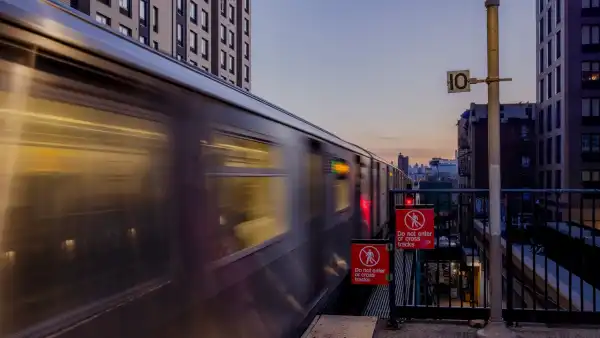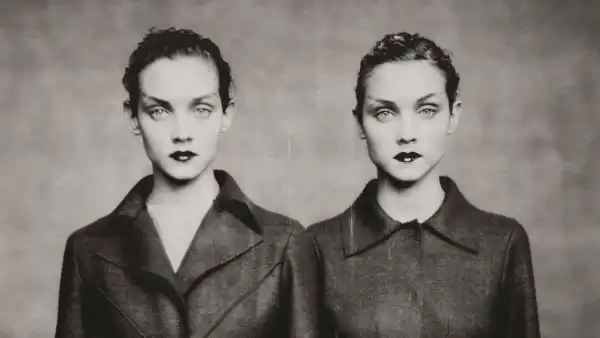
Save this storySave this storySave this storySave this storyYou’re presently perusing Critic’s Notebook, our weekend segment examining the most compelling occurrences in the cultural atmosphere.
A larger percentage of passersby pause near a roadside memorial beneath an overhead segment of the J and Z lines in northern Brooklyn. This conduct feels irregular. New York City overflows with resolute individualists who nonetheless adhere to specific principles quite rigidly. Upon spotting a memorial during your daily travels, exhibiting reverence takes the form of quickening your stride, feigning a vacant expression, and looking elsewhere. Yet these walkers are losing themselves; they are reducing their pace to a total standstill at this solitary altar, given that it portrays something exceptionally unsettling: the anguish of teenagers. Positioned inside the niche of a steel support, one finds corner-store blossoms, devotional candles, and a blank poster, adorned with messages inscribed in rounded, juvenile letters—resembling dedications inscribed in yearbooks at graduation—directed toward the departed, two junior-high students, Ebba Morina and Zemfira (Zema) Mukhtarov.
Another dedication manifests as a video. A grieving individual on social media records from the utmost height of the Williamsburg Bridge, at twilight. From this lofty vantage point, the J train bound for Manhattan, traversing the bridge underneath, appears as a steely metallic streak. The video is embodying the outlook of the metropolis itself on October 4th, the night that Ebba and Zema, adorned in somber, obscuring hues, elevated their slight forms onto the roof of a subway carriage, where they were ultimately discovered, deceased, at the Marcy Avenue terminal. The video, captured by someone who presumably ascended one of the bridge’s three-hundred-and-ten-foot columns, is essentially a tribute conceived in the throes of the mindset that precipitated the young girls’ demise. The eulogist, mirroring past actions by Ebba and Zema, posts footage on social networks showcasing their ventures into the off-limits zones of New York City’s tangible framework—the underbelly—thus expressing a particular awareness of the sorrowful event, a desire to challenge the commonplace accounts of juvenile foolishness or irresponsibility.
Ebba and Zema marked the fourth and fifth fatalities this year related to riding on a train’s exterior. The majority of the deceased have been minors. This occurrence, known as subway surfing, has recently seen an upswing, leading the Metropolitan Transportation Authority to rejuvenate its preventative effort—“Ride Inside, Stay Alive”—by enlisting well-known figures such as the rapper Cardi B and the professional BMX cyclist Nigel Sylvester to document announcements aired within subway stations and particular trains. (“Quit subway surfing!” Cardi declares. “Stay safe, be smart, and keep moving.”)
“Ride Inside, Stay Alive” was initiated in the spring of 2023, in response to a rise in surfing-related deaths. Mayor Eric Adams convened a press briefing under an overpass on the 7 train in Queens, a line that extends almost entirely above ground until the East River. That line, in conjunction with the J, M, and Z, had been designated by the M.T.A. and New York Police Department as a “predominant location” for surfing. The authorities themselves employ the phrase “surfing,” desensitizing the jargon. Echoing the Rudy Giuliani administration, albeit somewhat ineffectual in harshness, the Adams administration has embraced spotlighting a menace, an avenue to conjure up existential threats of societal decay that the mayor’s office can subsequently assert to remedy. At that point, New Yorkers in the outer boroughs were incensed at Adams, who had reneged on his vow to be a “bus mayor.” (The pace of buses has, in reality, diminished during his tenure.) Here was a transit problem he hadn’t instigated, one that held the potential for resolution. Here was a transit problem that could be attributed to children.
Do adventure-seeking youngsters resemble birds, deterred by metaphorical spikes atop the roof? In late October, the M.T.A. did introduce obstacles—upright padding crafted from resilient rubber—between carriages on specific trains running on the 7 line, restricting paths for climbing. These experiments in design cannot overshadow the reality that the issue has largely been transferred to the police. This year, the N.Y.P.D. has apprehended upwards of one hundred and twenty individuals suspected of traveling on a subway car’s exterior. Barely two days after Ebba and Zema’s passing, the N.Y.P.D. disseminated a thirteen-second excerpt, via Instagram, of a thwarted surfing episode: in the footage, a pair of individuals detach themselves from the exterior of a stationary train carriage, hurrying inside rapidly, as if startled. The police generated the footage via drone; it constitutes a portion of the “Drone as First Responder” initiative, instituted by the police commissioner, Jessica Tisch. (One of Tisch’s initial roles for the city involved inaugurating the N.Y.P.D.’s office for information technology.) The drones are intended to function as a “force-multiplier,” according to the public-safety deputy Kaz Daughtry, enhancing the already-amplified police presence within the subways. They additionally render this presence more detached, more ubiquitous.
Adams refers to the apprehensions of surfers as “saves” or “rescues.” He is correct that the apprehensions potentially avert fatalities. Nonetheless, it is equally accurate that his administration is encasing invasive surveillance within the non-political packaging of safeguarding teenagers from their muddled selves. The inquiry into safety on the subway—an inquiry that casts light on unpleasant and deceitful programs of alleged civic betterment, of the expansionism of Ed Koch and the antagonisms of Giuliani—had been framed by a pair of violent incidents in the aftermath of the pandemic: the Sunset Park shooting, and the slaying of Jordan Neely. The violence perpetrated by the surfer, conversely, is against themselves. It is criminalized, generally as reckless endangerment, yet isn’t categorized in the minds of average citizens as a societal offense. The drones furnish Tisch’s broader surveillance endeavors—which encompass the corralling of excess of a thousand underage, predominantly Black and Latino New Yorkers into gangs within a “Criminal Group Database”—the appearance of beneficence. (She is additionally advocating for the repeal of “Raise the Age,” the state statute that shields children under eighteen from adult court.)
Demetrius Crichlow, the president of N.Y.C. Transit, hails from a lineage of three generations of transit workers. The prior year, subsequent to almost three decades serving at the M.T.A., he secured the position overseeing the subways and buses, positioning him second in command only to Janno Lieber, the chief of the M.T.A., who assumed the uppermost rank after Andy Byford, the coveted rescuer of our drowning subways, departed bitterly under former Governor Andrew Cuomo. Crichlow juxtaposes Adams’s pathological flamboyance with an atmosphere of fatherly unease. In the wake of Ebba and Zema’s demise, Crichlow cautioned, “Climbing atop a subway isn’t ‘surfing’—it’s suicide.” What else could it be?
During my adolescent years, I dedicated two to three hours daily to the subway. It constituted a liminal domain, inherently transitory, not quite a place in its own right. I recall perceiving, within the subway, that we teenagers exerted an exorbitant influence over adults, who recoiled in irritation as we occupied the cars extensively, yet recoiled, nonetheless. We were at liberty to misbehave within the subway because it was an authority-free zone between residence and education. There existed an unspoken exhibitionism in the manner we slouched as intimately as possible to the platform’s border while awaiting the train, compelling ourselves to refrain from recoiling when the express car careened into the station. What garnered popularity then wasn’t so much voyaging atop the roof as voyaging amidst carriages. I found it impossible; a relative of mine had perished, one January morning, subsequent to being struck by an E train in Queens. However, with a blend of envy and fascination, I observed my companions be jolted from side to side, feigning impassivity. We were inconsequential. I was acquainted with children capable of traversing miles through the subway passages, their grasp of the framework so thorough.
Bystanders on the J recall observing a group of youths alongside Ebba and Zema preceding their fateful voyage, presumably encouraging the girls. For several days following their deaths, their social-media accounts remained accessible. It proved agonizing to observe the videos they had bequeathed, a form of tangible trail leading to their ruination. A P.O.V. video showcases the void of a passage retreating at considerable velocity, implying that the girl recording must have been dangling from the exterior of the ultimate carriage of a moving train. In another, a girl reposes on tracks; someone must have been present with her to secure the shot. A profusion of innards from dilapidated and derelict structures, an abundance of captures of the nocturnal hours, filmed atop scaled bridges, all captured erratically. This represents a dual surge of adrenaline: the peril of the act itself, and subsequently the gratification derived from uploading evidence. Of late, New York City has appended a lawsuit to the multitudes already lodged by local authorities against social-media enterprises such as Meta, which possesses Instagram, and Bytedance, the proprietor of TikTok. The city alleges that social media has precipitated a youth mental-health catastrophe, and that the indiscriminate algorithmic logic has propelled surfing videos to the forefront. (Social-media firms have, in previous years, collaborated with the city by identifying videos.) In filing the legal action, the city was emulating Norma Nazario, who, in 2024, initiated legal proceedings against TikTok and Meta for the unjustified death of her fifteen-year-old offspring, Zackery, who succumbed to surfing, asserting that algorithms incited her son to develop an addiction to the behavior. Meta and TikTok have submitted petitions to have the legal action dismissed; the courts have rejected these petitions.
Any individual possessing a rudimentary comprehension of New York City subway culture acknowledges that riding beyond the train predates social media. It has long been an activity linked with children residing in the outer boroughs, Black children, brown children, their demises previously accounted for. In 1996, when a fourteen-year-old riding atop a 2 train collided with a signal lamp and tumbled onto the tracks, meeting his demise, Giuliani, during his broken-windows zenith, posited the evaluation that the boy’s guardians bore some liability for his passing. Currently, the cruelty that characterizes our attitudes toward children has a receptacle in social media. We attribute blame to the digital platforms and deride these youths as dimwitted stunt performers, addicts—even as the most astute adults amidst us exhibit a parallel dependence on platforms to dictate their identities.
The TikTok P.O.V. voyages of children aboard a moving train do attain virality for a period, notwithstanding their eventual removal. Nonetheless, the videos intimate more than mere showing off or thrill-seeking; they differentiate themselves from other instances of internet exhibitionism. The escalation in surfing appears to directly correlate with the emergence of a more battered New York City subsequent to our harsh quarantine: there existed nine hundred and twenty-eight accounts of individuals riding outside of train carriages in 2022, compared to four hundred and ninety in 2019. This represents one of the myriad crises that the Adams administration will relinquish on its desk for Mayor-elect Zohran Mamdani to resolve. Mamdani has conveyed that he intends to retain Tisch, the reviver of apprehensions regarding so-called youth crime, as his police commissioner. However, it stands to reason that, given Mamdani’s intentions to delegate particular community-safety matters away from the police, deterrence will manifest distinctly within his administration. Surfing constitutes an atypical tragedy. We cannot allocate culpability entirely to systemic flaw. This characteristic of aberration is what renders accidental surfing fatalities seemingly inevitable—or, rather, inescapable, embedded within the subway’s force.
Contemporary surfing aligns with a surge in postings concerning urbex, an abbreviation for urban exploration of abandoned spaces, which, in New York City, exposes the city’s perpetual schism: accelerated corporatization, rampant dilapidation. There exists a genuine fervor to immerse oneself within the forsaken extremities of the city. Y’Vonda Maxwell, the maternal figure of Ka’Von Wooden, who perished subsequent to falling from a J train in 2023, informed the Times that trains were all “he consumed, contemplated, discussed.” In 2022, Kosse Laureano plummeted to his death off a 7 train at Hudson Yards. His comrade Alexander Antelman crafted a video he designated “Underworld: A Memorial to Kosse Laureano (2004-2022),” a collage of Laureano’s exquisite and terrifying shots of trains in generally unseen motion. This transcends mere obsession with peril but extends to the subway itself—its neglected track frameworks, its derelict ramps, its disused shells. Surfers harbor an interest in abandonment. Or, as one divulged to Curbed the prior year, “It’s a means of expression. It’s a means of artistry.” His conviction feels maddening, yet not beyond comprehension—it embodies the conviction of a child aspiring to commandeer the city before it engulfs him. ♦
Sourse: newyorker.com







